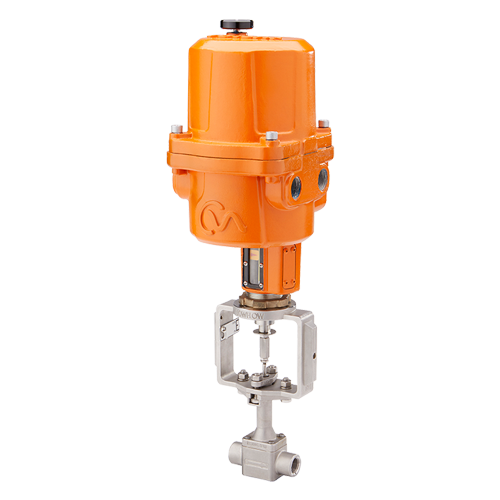Efficient Control Valves: Key Parts for Effective System Monitoring
Efficient Control Valves: Key Parts for Effective System Monitoring
Blog Article

Maximize Power Financial Savings and Convenience With Advanced Building Automation Controls
In the realm of modern-day architecture and center management, the assimilation of innovative building automation regulates stands as a critical advancement. By taking advantage of the power of automation, buildings can adapt, react, and progress in ways that were as soon as unthinkable.
Energy Efficiency Perks
Power performance advantages can dramatically decrease energy consumption and functional costs in structures. Energy-efficient systems, such as sophisticated building automation controls, can optimize the use of resources like lights, air conditioning, and home heating, leading to reduced energy costs over time.
In addition, improved energy performance can extend the lifespan of structure equipment and systems. By running a lot more efficiently, heating and cooling systems, lighting fixtures, and various other building parts experience less wear and tear, causing decreased upkeep and replacement costs. Furthermore, energy-efficient buildings often command greater property values and rental prices, offering lasting monetary advantages to owners.
In addition, energy performance can enhance owner comfort and performance. Correctly managed indoor atmospheres with optimum illumination and thermal problems create an even more enjoyable and helpful work space, resulting in boosted worker fulfillment and performance. On the whole, the energy performance benefits linked with innovative structure automation controls are diverse, incorporating expense financial savings, ecological stewardship, and resident well-being.
Boosted Comfort Control
Enhancing convenience control in structure settings needs an innovative integration of sophisticated automation systems for optimum resident wellness. By making use of advanced building automation controls, centers can tailor the indoor atmosphere to satisfy the certain demands and choices of owners. These systems make it possible for precise policy of temperature, lighting, and ventilation, creating a efficient and comfortable atmosphere. Occupant complete satisfaction and productivity are closely connected to thermal convenience, making it important to have systems in place that can adjust to altering conditions in real-time.
Boosted comfort control goes past fundamental temperature changes. It includes features such as personalized setups, occupancy sensing units, and natural light usage to develop a receptive and dynamic setting. By integrating these advanced controls, structures can not only enhance convenience yet likewise improve power efficiency by maximizing system operations based upon actual tenancy and usage patterns. Eventually, focusing on passenger convenience with innovative automation systems causes a more delightful and healthier interior environment.
Functional Efficiency Improvements

Moreover, the application of real-time surveillance and analytics tools makes it possible for building drivers to identify energy inadequacies and operational anomalies immediately. By continuously keeping an eye on power usage patterns and system performance metrics, changes can be made in real-time to optimize energy usage and make certain peak operational effectiveness. control valves. In addition, incorporating demand feedback strategies into structure automation controls can further improve operational go to my site performance by dynamically readjusting power usage based on grid conditions and prices signals
Indoor Climate Optimization
Effective interior environment optimization is a basic aspect of building automation controls, guaranteeing passengers' convenience and health while making best use of power savings. By using innovative sensing units and controls, constructing automation systems can continually monitor and adjust temperature, humidity levels, air quality, and ventilation to create an ideal indoor atmosphere. Keeping comfortable and constant problems not just boosts owner satisfaction yet additionally enhances efficiency and general well-being.
Interior environment optimization likewise plays a vital function in energy performance. By fine-tuning cooling, air flow, and home heating systems based on real-time information and occupancy patterns, building automation controls can dramatically minimize energy intake - control valves. Implementing approaches such as demand-controlled ventilation and thermal zoning can aid lessen power waste while making sure that each area of the structure receives the essential conditioning.

Lasting Atmosphere Development
Building automation manages not only optimize interior environment problems for energy efficiency and occupant convenience yet likewise lay the foundation for developing a lasting atmosphere through tactical monitoring of systems and sources. By integrating advanced structure automation modern technologies, such as sensing units, actuators, and smart software application, facilities can keep track of and adjust energy use in real-time to reduce waste and lower their carbon impact. These systems allow predictive maintenance, recognizing potential concerns before they rise and enhancing equipment efficiency to enhance longevity and effectiveness.
Additionally, sustainable setting development expands past energy administration to encompass water preservation, waste reduction, and interior air quality renovation. Building automation controls can manage water usage, find leaks, and make certain appropriate garbage disposal methods, adding to general sustainability initiatives. Additionally, by controlling and keeping an eye on air flow and filtering systems, these have a peek at this site modern technologies improve owner health and performance while decreasing energy intake connected with heating and cooling procedures.
Final Thought
To conclude, advanced structure automation regulates deal considerable benefits in terms of power cost savings, convenience control, functional efficiency, indoor environment optimization, and producing a sustainable atmosphere. By applying these controls, buildings can achieve ideal performance while minimizing power intake and improving resident comfort. It appears that using advanced automation technology is important in improving structure you could check here efficiency and producing a much more lasting future.
Power performance advantages can dramatically reduce power consumption and operational costs in structures. Overall, the power performance advantages linked with innovative structure automation controls are complex, incorporating cost financial savings, ecological stewardship, and passenger wellness.
In addition, including demand reaction strategies right into building automation controls can further boost functional efficiency by dynamically readjusting power usage based on grid problems and prices signals.
Building automation regulates not only optimize indoor environment problems for energy efficiency and occupant convenience however likewise lay the foundation for creating a sustainable environment via calculated monitoring of systems and resources.In conclusion, progressed building automation controls deal significant advantages in terms of power financial savings, convenience control, functional efficiency, interior environment optimization, and creating a lasting environment.
Report this page